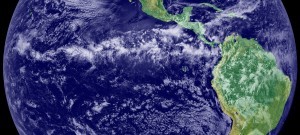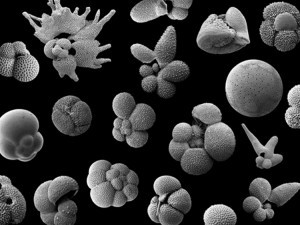Tapping into Earth’s Secret History
In a study published last week, Lamont post-doctoral scholar Heather Ford and coauthors used 4 million-year-old fossils from the Pliocene to reconstruct the physical features of the Pacific Ocean that would have shaped the environment during a critical juncture in Earth history.

To better forecast how the global climate will fare under future conditions, it is critical to understand the planet’s past. The challenge is how to tap into a history five billion years in the making. Paleoclimatoligists are the scientists who step up to the challenge of using clever chemical techniques to unlock and make sense of the rich data hidden in Earth’s distant past.
In a study published last week in Geophysical Research Letters, Lamont post-doctoral scholar Heather Ford and coauthors used 4 million-year-old fossils from the Pliocene to reconstruct the physical features of the Pacific Ocean that would have shaped the environment during a critical juncture in Earth history.
“We were interested in how the tropical thermocline developed over the last five million years and the general evolution of tropical dynamics that are important to today’s climate,” said Ford. The thermocline is the transitional layer of water between the mixed surface ocean and the cold deep.
The Pliocene commenced around five million years ago, and gradual cooling during this period paved the way for the repeating glaciations of the Pleistocene epoch that followed. During this time critters small and large migrated across the recently bridged Isthmus of Panama, and grasslands expanded across the continents.
“The Pliocene is interesting because it’s the most recent period of sustained warmth,” Ford said, “It’s a pseudo test-bed for future climate change.”
Ford and colleagues sampled deep sea sediment cores from the western equatorial Pacific looking for fossilized shells of planktonic microorganisms called foraminifera. These tiny calcium carbonate fossils can be used as proxies for past climate conditions.

The chemical makeup of these foraminifera shells are like ancient thermometers. Each contains an encrypted snapshot of the climate at the moment the organism died and sank to the bottom of the ocean. Chemical analysis of the elemental ratios within these shells are the key to decode the temperature data they contain.
“The subsurface temperature records in our study suggest the thermocline was deeper and/or warmer than today,” said Ford. By combining these temperature measurements with changes in species composition in fossil records and knowledge of ocean-atmosphere dynamics, Ford and colleagues infer that over the last four million years as ocean temperatures decreased, the difference in temperature between the eastern and western equatorial Pacific became more pronounced.
While these changes would have had a large local impact on the tropical Pacific, they also influenced the global climate. Ford and colleagues posit that these changes could have triggered the transition between the warm Pliocene and the cooler Pleistocene.
The average state of the equatorial Pacific during the Pliocene is referred to as El Padre, because it resembled a long-term version of the episodic El Niño events in the modern Pacific. As such, interpreting these trends in the history of the planet can lend insight into the future.
“Paleoclimatologists are interested in the Pliocene because it’s a pseudo-analog for future climate change,” Ford said. However, a rapidly changing climate hampers the predictive power of the Pliocene. “With continued human CO2 inputs, this time period won’t serve as a comparable climate state much longer.”
